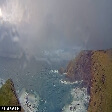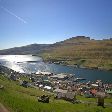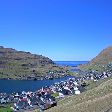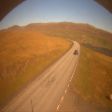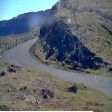Fyrsta føroyska bygdin, sum fekk vitjan av einum flogfari, var Sumba. Trý amerikonsk hernaðarflogfør vóru síðst í juli 1924 farin eina ferð kring jarðarknøttin, og ætlanin var, at tey skuldu leggja at í Føroyum.
Stutt áðrenn tey skuldu koma, frættist tó, at tey fóru at halda leiðina fram úr Kirkwall í Orknoyggjum beinleiðis til Íslands.
Morgunin eftir fóru hini bæði flogførini aftur úr Kirkwall. Fyrrapartin kom annað flúgvandi lágt inn yvir Sumbiar bygd og slepti niður einum boðum. Studenturin Einar Djurhuus fann boðini og las tey. Har varð sagt, at vilsta flogfarið hevði sett seg á sjógvin 115 fjórðingar úr Orknoyggjum, og at boð beinanvegin máttu sendast amerikanska krússaranum "Richmond" um hetta.
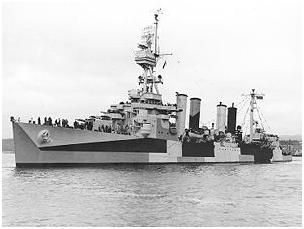
Sýslumaðurin sendi boðini víðari, men vildi eisini sum skjótast koma flogfarinum til hjálpar og ætlaði at senda hvalabátarnar út at leita, men teir vóru allir úti. Fleiri tímar gingu, og onki hoyrdist aftur um flogfarið. So um 5-tíðina hendan seinnapartin komu boð um, at "Richmond" hevði bjargað manningini.
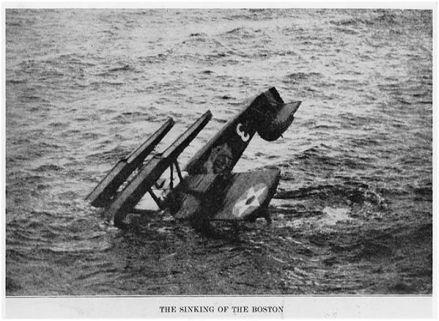
The Boston sank when it was being towed after it had been forced to
come down in the Atlantic Ocean
Historical Note
In 1924, the U.S. Army Air Service decided to attempt an around the world flight to prove that the airplane was a valuable and viable method of transportation and could therefore have a great impact on the world's future.
TheDouglas Aircraft Company was commissioned by the Army Air Service to build an aircraft for the flight. The result was the Douglas O-5 Observation Seaplane, which was referred to in 1924 as the Douglas World Cruiser (DWC).
The O-5 grew out of the 1923 Douglas Observation Seaplane (DOS).
On April 6, 1924, four Army Air Service DWC Seaplanes departed from Seattle, Washington in an attempt to fly around the world. They were the: "Seattle", "Chicago", "Boston" and "New Orleans." The "Seattle" was delayed by a forced landing caused by engine trouble early on and was trying to catch up to the others when bad weather forced it off course. It crashed near Chignik, Alaska. The "Boston" suddenly lost oil pressure and had to land at sea between Orkney and Faroe Islands. Although the landing was successful, the "Boston" was damaged beyond repair during an attempt to hoist it on board the USS Richmond. At Pictou Harbor , Nova Scotia, the prototype aircraft arrived to join the remaining two and became the "Boston II." From there the planes flew on across the United States and landed at Sand Point Field












